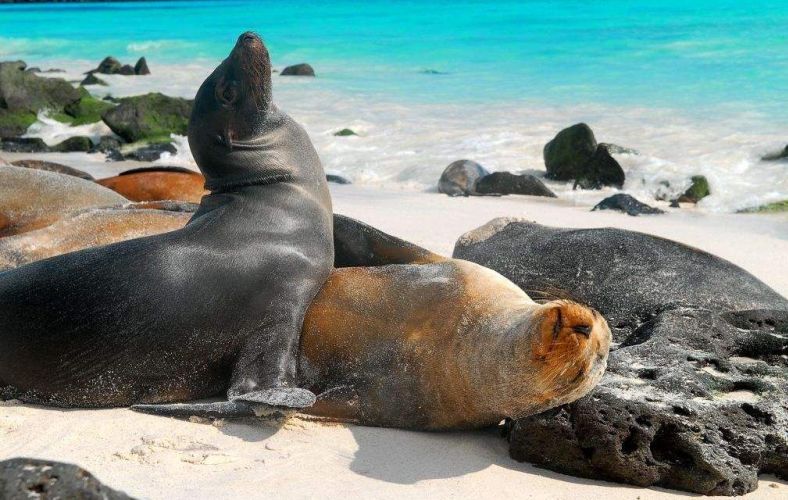New Galapagos Giant tortoise species identified
A team of Ecuadoran and international scientists said on 10/22/2015 they have identified a new giant tortoise species on the Galapagos Islands.
There are only a few hundred members of the new species, Ecuador’s environment ministry said in a statement.
Experts had long believed that the two giant tortoise populations on the Santa Cruz island were of the same species, but genetic tests have shown that those living on the eastern side of the island are different, the statement read.
The researchers, led by Gisella Caccone from Yale University, baptized the new species “Chelonoidis donfaustoi,” in honor of Fausto Llerena, the caretaker of Lonesome George, a male Pinta Island tortoise and the last known survivor of his species.
George died in June 2012.
After a decade-long investigation, this division is now official, formalized in a paper published today in PLoS ONE. Where there was just one species yesterday (the Santa Cruz tortoise C. porteri), we can now recognise two (the Western Santa Cruz tortoise Chelonoidis porteri and the Eastern Santa Cruz tortoise Chelonoidis donfaustoi).
The head of the Galapagos National Park, Alejandra Ordonez, said that research on the new species continues “to determine their exact distribution on the island, their nesting areas, and potential threats.”
With this find, experts now believe that 15 species of tortoise lived on the islands, including four that are extinct.
The Galapagos archipelago, located 1,000 kilometers (620 miles) west of Ecuador, is a fragile ecosystem that harbors the largest number of different animal species on the planet.
Reciente
- Islas Galápagos tiene el Primer Transporte Marítimo Eléctrico Solar “Catamarán”
- The Galapagos Islands have the most Hummer Sharks in the world
- Las Islas Galápagos tiene la Mayor Concentración de Tiburones Martillo del Mundo
- New Galapagos Giant tortoise species identified
- Climate and Precipitation in the Galapagos Islands
Términos Populares
Aeropuerto conservacion Darwin Deals Ecuador ekwador Energia energía eólica equador Equipo Evolution Fernandina Fly Galapagos Genovesa geografica Geographic Guayaquil Historia Information Isabela Island Islands Islas Isla Santa Cruz location medio ambiente Puerto Ayora Quito reciclaje Recycling renovable SailBoat San Cristobal Santa María Tour Tourist Tours Travel Trip Tsunami Turismo Turista Ubicacion VisitantesAnunciantes









